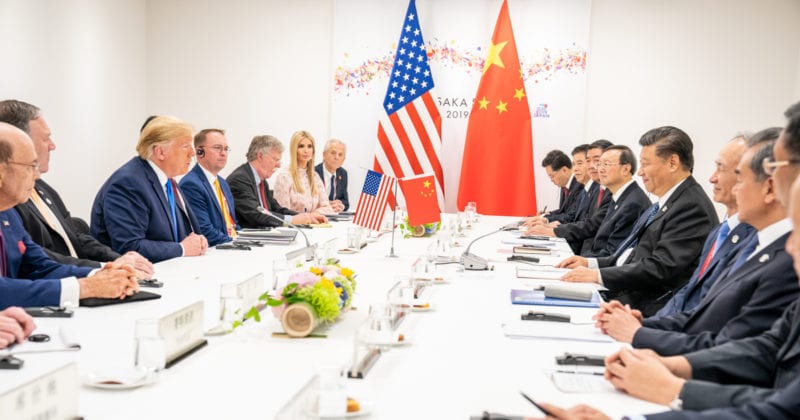What Does Tariff Mean? Understanding Its Impact understanding tariff definition is essential for anyone looking to grasp the complexities of global trade. Whether you’re a consumer, a business owner, or just curious about international commerce, tariffs have far-reaching effects. This simple yet powerful tool is used by governments worldwide to regulate trade, protect local industries, and manage economic relations with other nations. But what exactly is a tariff, and why is it so important?
What Is a Tariff?
A tariff definition typically refers to a tax imposed on goods and services when they are imported into a country. Governments use tariffs for a variety of reasons, ranging from protecting domestic industries to raising government revenue. Essentially, a tariff acts as a barrier to foreign goods, making them more expensive and less competitive in the domestic market.
This simple mechanism serves as a critical tool in a government’s trade strategy. However, tariffs can have both positive and negative consequences, not just for governments, but also for consumers and businesses.

The Role of Tariffs in International Trade
Protecting Domestic Industries
One of the main purposes of tariffs is to protect local businesses from foreign competition. When a country produces goods more efficiently than another, it can sell them at much lower prices. This can harm domestic industries that aren’t as competitive. By imposing a tariff, the government can make imported goods more expensive, encouraging consumers to purchase locally-produced items instead.
For example, if a country imposes a 20% tariff on foreign-made cars, consumers may opt to purchase domestically produced vehicles, which now seem more affordable compared to the imported ones. While this protects local industries in the short term, it may also lead to higher prices for consumers in the long run.
Revenue Generation
In some cases, governments use tariffs as a means of generating revenue. In countries with less-developed tax systems, tariffs can be a major source of funding for public services. For instance, developing countries may rely on import duties to help fund infrastructure projects or improve education and healthcare.
However, as global trade becomes more interconnected, relying on tariffs as a primary source of revenue is becoming increasingly difficult. Free trade agreements and international commitments are steadily reducing tariffs on many products, meaning governments must find new ways to generate income.
Trade Negotiations and Diplomacy
Tariffs are often used as negotiation tools in international trade. Countries may use tariffs to pressure other nations into agreeing to favorable trade terms or improving their practices. For example, if one country believes that another is subsidizing its industries unfairly, it may impose tariffs to protect its own market from being flooded with cheap products.
In such cases, tariffs can serve as a diplomatic tool to push for changes in trading practices. This can lead to agreements that benefit both countries involved, although the consequences of trade negotiations involving tariffs are not always predictable.
How Tariffs Affect Consumers
Although tariffs are designed to protect domestic industries and generate government revenue, their direct impact is often felt by consumers. When a tariff is imposed on foreign goods, the cost of these goods rises, which can result in higher prices for consumers. This is especially true for products that rely heavily on imports, such as electronics or clothing.
Take, for example, the case of a country imposing a tariff on imported electronics. If the tariff increases the price of smartphones by 10%, consumers will likely see an increase in the cost of their desired products. As a result, some consumers might opt for cheaper, domestically produced alternatives, which may not always meet the same quality standards.
Different Types of Tariffs
Not all tariffs are created equal. In fact, there are several different types, each serving a specific purpose within the realm of trade regulation. Let’s take a look at some of the most common types:
Ad Valorem Tariffs
Ad valorem tariffs are the most common type and are based on the value of the imported goods. For example, a country might impose a 15% ad valorem tariff on imported shoes, meaning the importer would pay 15% of the value of the goods in taxes. If the shoes cost $100, the importer would have to pay an additional $15 in tariff fees.
Specific Tariffs
Specific tariffs are a fixed fee imposed on a particular quantity of goods. For example, a specific tariff of $2 per kilogram may be placed on imported fruit, regardless of the price. This makes it easier for governments to manage tariffs, as the tax is independent of the value of the goods.
Compound Tariffs
As the name suggests, compound tariffs combine both ad valorem and specific tariffs. A country may impose a 10% ad valorem tariff plus a $3 specific tariff on every unit of imported coffee. This type of tariff is used when the government wants to balance revenue generation with price regulation.
Anti-Dumping Tariffs
Anti-dumping tariffs are imposed when a country believes another nation is “dumping” products at unfairly low prices to drive local businesses out of the market. For example, if a country exports steel at below-market prices to another nation, the importing country might impose an anti-dumping tariff to protect its own steel industry.
The Economic Impact of Tariffs
Increased Prices for Consumers
The most immediate impact of tariffs is higher prices for consumers. When tariffs are imposed on imported goods, these goods become more expensive, and that increase is often passed on to consumers. For example, if a country raises tariffs on imported washing machines, consumers will likely have to pay more for these appliances, whether they are domestic or imported.
Trade Wars and Retaliation
One of the potential risks of imposing tariffs is the possibility of retaliation. If one country raises tariffs, another may follow suit and impose its own tariffs on goods from the first country. This can lead to a cycle of retaliatory tariffs, known as a trade war, which can have detrimental effects on the global economy. Trade wars can disrupt supply chains, increase prices, and harm businesses on both sides of the conflict.
Impact on Global Trade
The impact of tariffs is not just limited to the countries imposing them. Tariffs can disrupt global supply chains, as companies may find it more expensive to source materials or finished goods from abroad. As trade barriers rise, global trade becomes less efficient, potentially leading to slower economic growth worldwide.
The Pros and Cons of Tariffs
Advantages
- Protecting Domestic Jobs: By discouraging imports, tariffs help protect jobs in local industries, particularly in sectors like manufacturing.
- Government Revenue: Tariffs generate revenue for governments, which can be used to fund essential services or public infrastructure projects.
- Encouraging Local Production: Tariffs can create opportunities for domestic companies to grow, as foreign competitors face higher costs.
Disadvantages
- Higher Prices for Consumers: The most significant disadvantage of tariffs is that they result in higher prices for consumers, which can decrease purchasing power.
- Trade Disruptions: Tariffs can disrupt global trade and create tension between countries, potentially leading to trade wars.
- Reduced Consumer Choice: When tariffs make imports more expensive, consumers may have fewer options for products, limiting their ability to choose the best value for their needs.
Understanding the tariff definition is crucial for anyone engaged in the world of international trade. Tariffs are powerful tools that governments use to protect domestic industries, generate revenue, and influence trade negotiations. However, the consequences of tariffs are complex and can have significant effects on consumers, businesses, and global trade relations.
As the global economy continues to evolve, it’s essential to stay informed about the role tariffs play in shaping economic policies and international relations. Whether you’re a consumer or a business owner, understanding how tariffs work can help you navigate the complexities of the international marketplace.

:max_bytes(150000):strip_icc()/GettyImages-1328832142-68a8d5c0975449529757970c3e92fc7a.jpg)





